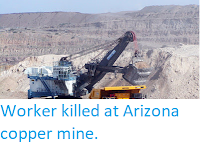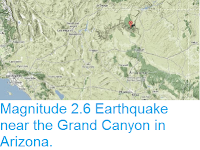The state of Arizona is currently suffering one of the worst fire seasons ever recorded, with three of the ten most severe wildfires in documented history currently still burning. The Bush Fire in the Tonto National Forest currently covers an area of about 910 km², making it the fifth largest fire in the state's history, and resulting in restrictions on visits to the area being imposed, although this fire is now 98% contained. However, the Bighorn Fire, in the Coronado National Forest in the Santa Catalina Mountains, is only 58% contained and now covers an area of about 480 km², making it the eighth largest fire in Arizona's history and again resulting in large areas of the forest being closed off to public access. A third fire, the Magnum Fire in the Kaibab National Forest now covers an area of about 290 km², and is only 67% contained. Several other, smaller fires are also still burning in the state, with the Wood Springs 2 Fire currently covering about 45 km² in the Navajo Nation, and only being 17% contained, and the Bringham Fire in the Apache-Sitgreaves National Forests currently covering about 95 km², and only being about 40% contained.
Satellite image of the Bush Fire in Arizona on 14 June 2020. Goddard Media Studios/NASA.
Wildfires are a common problem in Arizona, and the wider southwest United States, in summer, but this year's fires have been exceptionally severe, driven exceptionally high temperatures, regularly reaching 40-45°C in parts of the state in June, and the late arrival of the summer rains in the region. Worryingly these fires are reaching higher altitudes than is typical in Arizona, so that they are burning vegetation less well adapted to recover following such events. This is becoming a pattern in the region, with hotter drier weather each summer, combined with a shrinking wet season, leading to fires reaching new areas each year. This is likely to result in fire-adapted vegetation replacing other vegetation types in the area, as well as an expansion of arid- and semi-arid environments at the expense of other habitats.
See also...
Follow Sciency Thoughts on Facebook.







